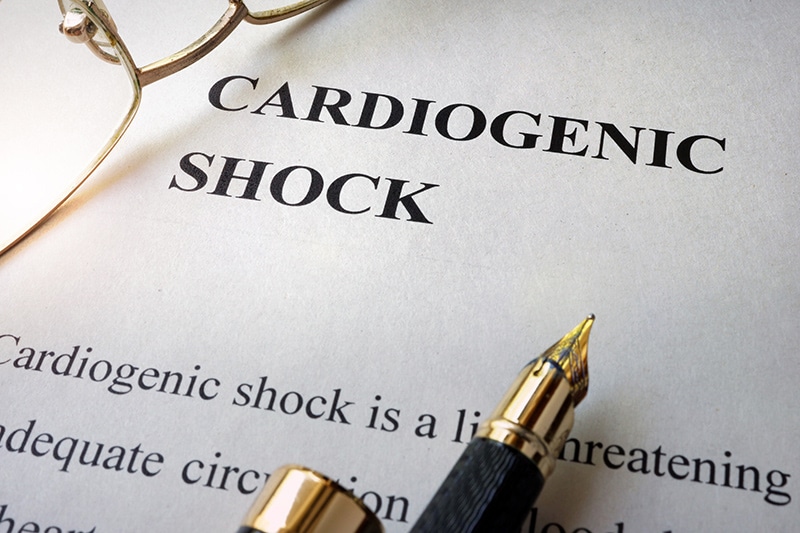Regarded as a life-threatening condition, cardiogenic shock occurs when the heart is suddenly unable to supply enough blood to the vital organs of the body. This results in reduced blood pressure levels and failure of organs. Reports from the National Heart, Lung, and Blood Institute (NHLBI) show that heart attack is the most common cause of cardiogenic shock. A severe attack can damage the heart’s main pumping chamber (left ventricle). Even though cardiogenic shock is rare, it’s often deadly and fatal, if not treated immediately. Billing and coding for cardiology conditions can be complex. For correct clinical documentation of this disorder, physicians can rely on the services of reputable medical billing companies.
As mentioned above, heart attack is the main cause of cardiogenic shock. Other related causes include – inflammation of the heart muscle (myocarditis), weakened heart (from any cause), sudden blockage of a blood vessel in the lung (pulmonary embolism), fluid buildup around the heart, damage/rupture of the heart valve and infection of the heart valves (endocarditis). Drug overdoses or poisoning with substances can also lead to cardiogenic shock.
Signs and Symptoms
Cardiogenic shock is more common in males than in females, particularly elder males. The symptoms may depend on how quickly the blood pressure drops and how low it gets. Some individuals may experience mild symptoms at first, whereas others may have no symptoms and then immediately lose consciousness. Common signs and symptoms include –
- Swollen feet
- Sweating and cold extremities, like fingers and toes
- Slow heart rate
- Rapid breathing
- Pressure, fullness or a squeezing pain in the center of the chest that lasts for more than a few minutes
- Pale, blue hue to the skin
- Nausea and vomiting
- Loss of consciousness
- Confusion and anxiety
- Bulging veins in the neck
- A sudden drop in blood pressure
Identifying the above signs or symptoms early can help reduce the risk of developing cardiogenic shock. There are several risk factors associated with the condition – previous history of heart attack or failure, people with blockages (coronary artery disease), people with history of high diabetes or blood pressure, people with long-term valvular disease and plaque buildup in the coronary arteries (arteries supplying blood to the heart).
Treating the Symptoms of Cardiogenic Shock Early
Diagnosis of cardiogenic shock will begin with a complete physical examination wherein the level of pulse and blood pressure are checked. Additional tests include – Electrocardiogram (ECG or EKG), Echocardiogram, Cardiac catheterization (angiogram) and Chest X-ray. As per reports from the Journal of the American Heart Association, physicians need to perform the EKG (reveal irregularities in the heart rhythm) within 10 minutes of the person presenting. Treatment modalities for the condition may depend on the results of the diagnosis tests.
As cardiogenic shock is a severe medical emergency, treatment modalities for the condition need to be initiated immediately. Treatment modalities aim to restore blood flow to the brain and other organs as quickly as possible to protect them from damage. Treatment modalities may include a combination of medications, heart procedures or other surgeries, depending on the person’s condition. These include – intravenous fluids, mechanical ventilation, mechanical circulatory support (MCS) devices, and heart catheterization for coronary angiography.
Applicable Medical Codes
Cardiology medical billing and coding involves using the relevant ICD-10 and CPT codes on the medical claims submitted to health insurers. A professional medical coding company provides the services of skilled medical coders who are up to date with the changing coding regulations and guidelines for the cardiology specialty.
Diagnosis Codes
- R57 Shock, not elsewhere classified
- R57.0 Cardiogenic shock
- R57.1 Hypovolemic shock
- R57.8 Other shock
- R57.9 Shock, unspecified
CPT Codes
- 33990 Insertion of ventricular assist device, percutaneous including radiological supervision and interpretation; left heart arterial access only
- 33991 Insertion of ventricular assist device, percutaneous including radiological supervision and interpretation; left heart, both arterial and venous access, with transseptal puncture
- 33992 Removal of percutaneous left heart ventricular assist device, arterial or arterial and venous cannula(s), at separate and distinct session from insertion
- 33993 Repositioning of percutaneous right or left heart ventricular assist device with imaging guidance at separate and distinct session from insertion
- 33995 Insertion of ventricular assist device, percutaneous, including radiological supervision and interpretation; right heart, venous access only
- 33997 Removal of percutaneous right heart ventricular assist device, venous cannula, at separate and distinct session from insertion
ICD-10 Procedure Codes
- 5A0221D Assistance with Cardiac Output using Impeller pump, Continuous
- 5A02216 Assistance with Cardiac Output using Other Pump, Continuous
Even though there are no guaranteed screening tests for cardiogenic shock, identifying the root causes of symptoms is key to preventing this condition. Patients experiencing the signs of a heart attack need to seek emergency medical care immediately. In addition, incorporating several lifestyle – and more heart healthy measures like – maintaining healthy blood pressure and cholesterol levels, managing stress levels, getting regular physical exercise, maintaining a moderate body weight, and stopping the habit of smoking and alcohol consumption can reduce the risk of heart disease in the long run.
Medical billing and coding for cardiology disorders can be challenging. To ensure maximum accuracy and efficiency in medical billing and coding tasks, healthcare practices can utilize medical billing services in USA from reputable billing and coding companies.




